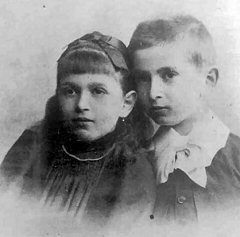
Sándor Ferenczi was a Hungarian psychoanalyst, a key theorist of the psychoanalytic school and a close associate of Sigmund Freud.

Otto Friedmann Kernberg is a psychoanalyst and professor of psychiatry at Weill Cornell Medical College. He is most widely known for his psychoanalytic theories on borderline personality organization and narcissistic pathology. In addition, his work has been central in integrating postwar ego psychology with Kleinian and other object relations perspectives. His integrative writings were central to the development of modern object relations, a theory of mind that is perhaps the theory most widely accepted among modern psychoanalysts.

Countertransference is defined as redirection of a psychotherapist's feelings toward a client – or, more generally, as a therapist's emotional entanglement with a client.

Transference is a theoretical phenomenon characterized by unconscious redirection (projection) of the feelings a person has about their parents, as one example, on to the therapist. It usually concerns feelings from a primary relationship during childhood. At times, this projection can be considered inappropriate. Transference was first described by Sigmund Freud, the founder of psychoanalysis, who considered it an important part of psychoanalytic treatment.
Psychodynamic psychotherapy or psychoanalytic psychotherapy is a form of depth psychology, the primary focus of which is to reveal the unconscious content of a client's psyche in an effort to alleviate psychic tension.

Relational psychoanalysis is a school of psychoanalysis in the United States that emphasizes the role of real and imagined relationships with others in mental disorder and psychotherapy. 'Relational psychoanalysis is a relatively new and evolving school of psychoanalytic thought considered by its founders to represent a "paradigm shift" in psychoanalysis'.
Repetition compulsion is a psychological phenomenon in which a person repeats an event or its circumstances over and over again. This includes reenacting the event or putting oneself in situations where the event is likely to happen again. This "re-living" can also take the form of dreams in which memories and feelings of what happened are repeated, and even hallucinated.

Franz Gabriel Alexander was a Hungarian-American psychoanalyst and physician, who is considered one of the founders of psychosomatic medicine and psychoanalytic criminology.
Acting out is a psychological term from the parlance of defense mechanisms and self-control, meaning to perform an action in contrast to bearing and managing the impulse to perform it. The acting done is usually anti-social and may take the form of acting on the impulses of an addiction or in a means designed to garner attention. The opposite attitude or behaviour is called acting in.
Regression, according to psychoanalyst Sigmund Freud, is a defense mechanism leading to the temporary or long-term reversion of the ego to an earlier stage of development rather than handling unacceptable impulses in a more adaptive way. The defense mechanism of regression, in psychoanalytic theory, occurs when an individual's personality reverts to an earlier stage of development, adopting more childish mannerisms.
Identification is a psychological process whereby the individual assimilates an aspect, property, or attribute of the other and is transformed wholly or partially by the model that other provides. It is by means of a series of identifications that the personality is constituted and specified. The roots of the concept can be found in Freud's writings. The three most prominent concepts of identification as described by Freud are: primary identification, narcissistic (secondary) identification and partial (secondary) identification.

Psychoanalytic dream interpretation is a subdivision of dream interpretation as well as a subdivision of psychoanalysis pioneered by Sigmund Freud in the early twentieth century. Psychoanalytic dream interpretation is the process of explaining the meaning of the way the unconscious thoughts and emotions are processed in the mind during sleep.
In psychodynamic psychotherapy, working through is seen as the process of repeating, elaborating, and amplifying interpretations. It is believed that such working through is critical towards the success of therapy.
Ernst Simmel was a German-Jewish neurologist and psychoanalyst.

Henry Z'vi Lothane, M.D., is a Polish-born American psychiatrist, psychoanalyst, educator and author. Lothane is currently Clinical Professor at Icahn School of Medicine at Mount Sinai, New York City, specializing in the area of psychotherapy. He is the author of some eighty scholarly articles and reviews on various topics in psychiatry, psychoanalysis and the history of psychotherapy, as well as the author of a book on the famous Schreber case, entitled In Defense of Schreber. Soul Murder and Psychiatry. In Defense of Schreber examines the life and work of Daniel Paul Schreber against the background of 19th and early 20th century psychiatry and psychoanalysis.

Arnold Richards, M.D., is a psychoanalyst and former editor of The American Psychoanalyst and Journal of the American Psychoanalytic Association (JAPA). Richards also is the Training and Supervising Analyst at the New York Psychoanalytic Institute. He is the founder and Editor-in-Chief of the International Psychoanalysis.net magazine. Richards is a board member and former chair of YIVO.
Negative transference is the psychoanalytic term for the transference of negative and hostile feelings, rather than positive ones, onto a therapist.








